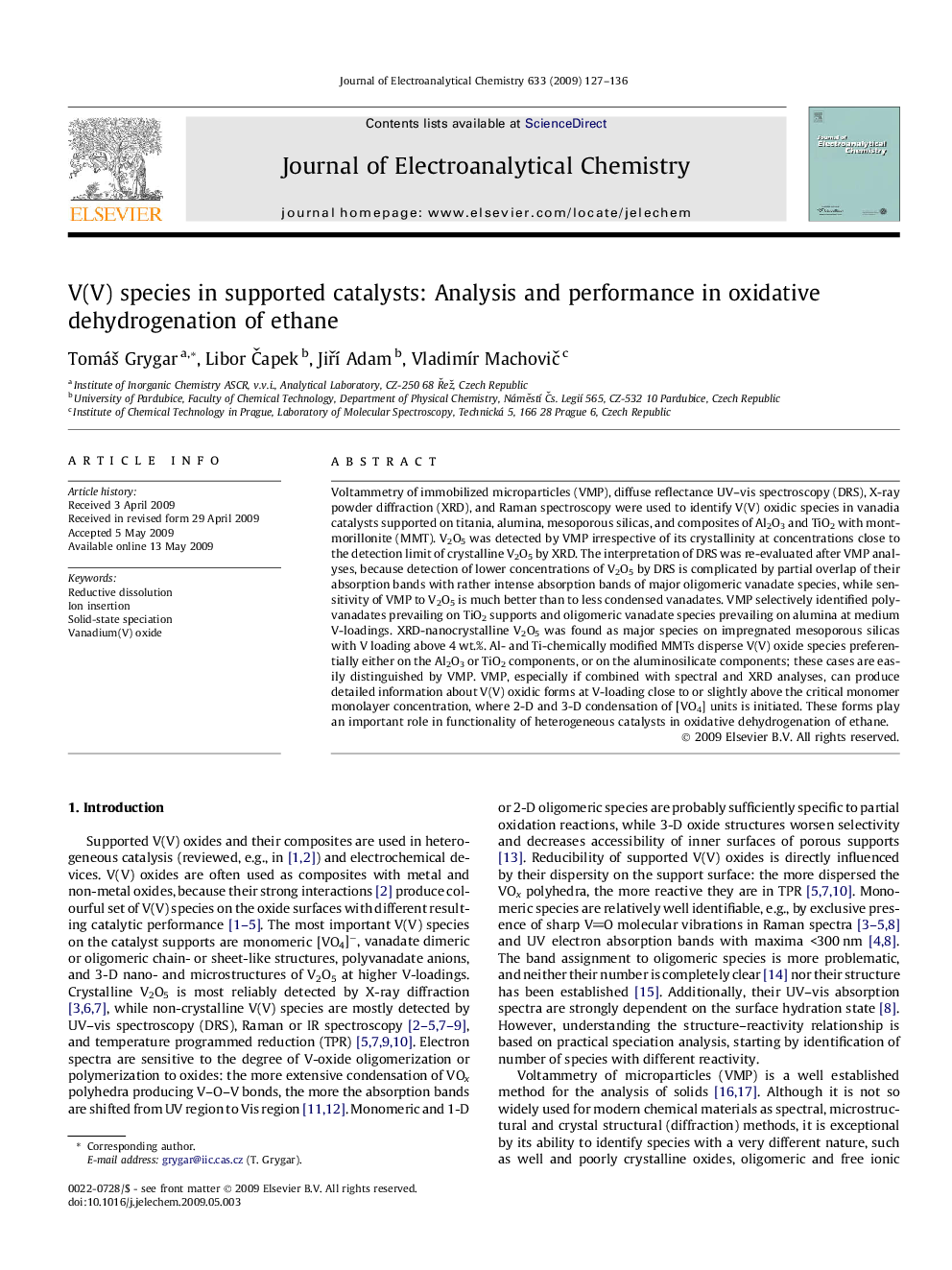| Article ID | Journal | Published Year | Pages | File Type |
|---|---|---|---|---|
| 220194 | Journal of Electroanalytical Chemistry | 2009 | 10 Pages |
Voltammetry of immobilized microparticles (VMP), diffuse reflectance UV–vis spectroscopy (DRS), X-ray powder diffraction (XRD), and Raman spectroscopy were used to identify V(V) oxidic species in vanadia catalysts supported on titania, alumina, mesoporous silicas, and composites of Al2O3 and TiO2 with montmorillonite (MMT). V2O5 was detected by VMP irrespective of its crystallinity at concentrations close to the detection limit of crystalline V2O5 by XRD. The interpretation of DRS was re-evaluated after VMP analyses, because detection of lower concentrations of V2O5 by DRS is complicated by partial overlap of their absorption bands with rather intense absorption bands of major oligomeric vanadate species, while sensitivity of VMP to V2O5 is much better than to less condensed vanadates. VMP selectively identified polyvanadates prevailing on TiO2 supports and oligomeric vanadate species prevailing on alumina at medium V-loadings. XRD-nanocrystalline V2O5 was found as major species on impregnated mesoporous silicas with V loading above 4 wt.%. Al- and Ti-chemically modified MMTs disperse V(V) oxide species preferentially either on the Al2O3 or TiO2 components, or on the aluminosilicate components; these cases are easily distinguished by VMP. VMP, especially if combined with spectral and XRD analyses, can produce detailed information about V(V) oxidic forms at V-loading close to or slightly above the critical monomer monolayer concentration, where 2-D and 3-D condensation of [VO4] units is initiated. These forms play an important role in functionality of heterogeneous catalysts in oxidative dehydrogenation of ethane.
